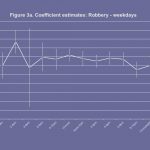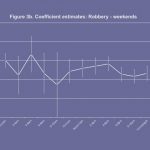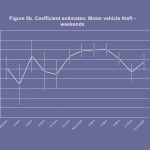You can now access an online first article by Dr. John R. Hipp, Christopher Bates, Moshe Lichman & Dr. Padhraic Smyth in Justice Quarterly entitled, “Using Social Media to Measure Temporal Ambient Population: Does it Help Explain Local Crime Rates?” The article examines the use of social media data, geocoded Tweets, as a proxy for the temporal ambient population, in testing various implications of routine activities and crime pattern theories in Southern California.
Get it here:
Using Social Media to Measure Temporal Ambient Population: Does it Help Explain Local Crime Rates?
Abstract:
A challenge for studies assessing routine activities theory is accounting for the spatial and temporal confluence of offenders and targets given that people move about during the daytime and nighttime. We propose exploiting social media (Twitter) data to construct estimates of the population at various locations at different times of day, and assess whether these esti- mates help predict the amount of crime during two-hour time periods over the course of the day. We address these questions using crime data for 97,428 blocks in the Southern California region, along with geocoded infor- mation on tweets in the region over an eight month period. The results show that this measure of the temporal ambient population helps explain the level of crime in blocks during particular time periods. The use of social media data appear promising for testing various implications of routine activities and crime pattern theories, given their explicit spatial and temporal nature.




